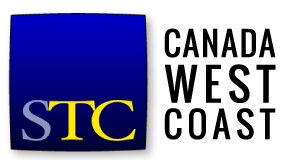Updating old documentation is a familiar challenge for many technical communicators, but fortunately one that can be interesting to tackle.
On October 16, 2021, Leah Guren of Cow TC presented strategies for lean editing in her webinar, Beyond Editing — Smarter Solutions for Fixing Legacy Content. This interactive workshop included onscreen editing exercises, real-time feedback, and Q&A sessions where Leah offered tips on navigating stakeholder relationships during the content management journey.
Leah kicked off the webinar by addressing the challenges of dealing with legacy content, and in particular the dangers of “fluff.” Fluff is anything that complicates content; it’s unnecessary words, complex sentence structures, even information that’s in the wrong place. Fluff hurts usability by not only confusing users, but also discouraging them from trying to find what they need.
The upside to all the fluffy legacy content out there, however, is that there are always jobs for technical editors. And the key to getting those jobs? Being able to identify fluff, and eliminate it through aggressive edits and creative thinking.
Aggressive editing
Leah talked about three approaches to aggressive editing: being unafraid of the subject matter expert (SME), removing or fixing misdirected content, and conducting iterative edits.
The first approach is a good reminder to technical communicators everywhere that the content might not even be correct. If you have a solid understanding of the product the SME has written about, don’t be afraid to question the content and make editorial decisions that benefit the user.
The second approach is straightforward; instead of removing only unnecessary words, remove all the information the user doesn’t need. Legacy content is often made up of information copied from various sources, so you might even be looking at content that’s in the wrong deliverable.
The third approach is a heavier lift, but the most appropriate solution if you’re at a complete loss. It requires going back to the beginning — figuring out what problem the document is trying to solve and what users need to know. Only then can you rewrite the document clearly and concisely.
Creative thinking
Moving away from text-based edits, Leah suggested fixing legacy content by restructuring information or going wordless. If you have long paragraphs with repetitive information, for example, try presenting that information in tables. If you have a lot of detailed procedures, try communicating them through graphics. Cutting out fluff can mean cutting out (almost) all the words — and it will help save on localization costs, too!
Final tips
Leah wrapped up the webinar with tips for writing content that stays relevant for users beyond the initial learning curve. She also introduced solutions for organizing miscellaneous information to satisfy SMEs while serving users. Ultimately, Leah showed that a lean approach to legacy content is the most effective way to help users — and companies — meet their goals.
Missed the webinar?
STC members and students: Register to watch the webinar for free.
Non-STC members: Register to watch the webinar for $25.
